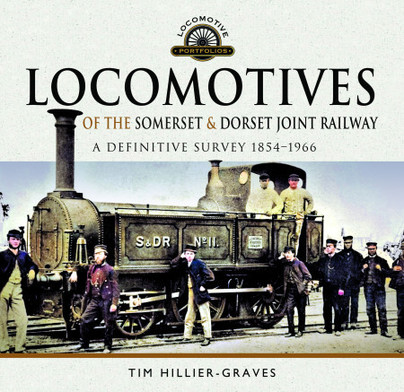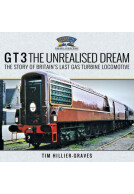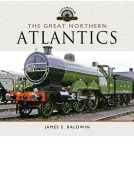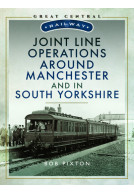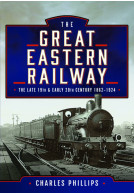Locomotives of the Somerset & Dorset Joint Railway (ePub)
A Definitive Survey, 1854–1966
Imprint: Pen & Sword Transport
Series: Locomotive Portfolios
File Size: 73.7 MB (.epub)
ISBN: 9781526748362
Published: 23rd June 2021
| Other formats available - Buy the Hardback and get the eBook for £1.99! | Price |
|---|---|
| Locomotives of the Somerset &… Hardback Add to Basket | £35.00 |
Although closed to traffic in 1966, with most of its infrastructure swiftly destroyed by British Railways, this unique railway line still lives in the minds of many, some too young to remember it in its heyday.
For more then a hundred years it courted disaster and could, on a number of occasions, have succumbed to overpowering financial pressures, but it survived with the help of partnerships with larger, more secure companies, namely the Midland Railway and the London & South Western Railway. Later on, after the grouping in 1923, the line came under the control of the LMS and the Southern Railway.
It was unfortunate that the line suffered in later years from inter regional rivalry between the Western and Southern Regions of British Railways, which led to its eventual closure.
The variety of companies involved in its running meant that during its lifetime, the small pool of locomotives needed to service the line was supplemented by the best each partner could offer.
So from the beginning to the end there were a myriad number of types of locomotive running over the Mendips, providing a lively variety of motive power.
This heavily illustrated book traces this unique and fascinating history and brings to life this singular, much-missed and loved railway.
Featured by
The Broad Gauge Society
As featured in
Journal, September/ October 2022
This book is not limited to the content suggested by the titled, it is much more. It starts with details of how the line was created as a link between the Midland Railway in South Wales and the London & South Western Railway in the West Country. Together with notes of the notable events and personalities associated with the line, traffic and rolling stock to give an overview of the requirements that the line would require from the locomotives.
Great Eastern Railway Society
It then progresses to some 198 pages of detailed chapters covering the locomotives in the early years, followed by the Midland years prior to 1904, the Midland years to 1922, the LMS years prior to 1947 and concluding with the Nationalised years to 1966. Each chapter notes the various locomotives in use and their background together with numerous photographs.
This book has made a superb accompaniment to the ‘O’ gauge model railway exhibition layout of Edington Junction that our model railway group have been exhibiting around the country for a few years.
"Each era is covered in great detail, with not just photos but also technical drawings for many of the classes described. The amount of detail in the text is impressive, but it is well written and never becomes tedious. Overall, this is a book for anybody interested in the history and geography of the S&D and the locos that worked over it. It is a most worthy part of the "S&D" library" covering one of the lesser-known aspects of the railway and can be highly recommended."
Paul E Davis, Friends of the NRM Review No. 179 Spring 2022
"The well laid-out book starts with a brief overview on the railway's history and then covers the early broad gauge period, followed by the two Midland eras, then the LMS and British Railways years in six separate chapters. The book also covers some of the accidents that occurred on the line through the years and the back histories of the companies, railways and personalities, which were involved in the locomotive matters on the S&D. There is a comprehensive index at the end of the book, so you can pick individual information you need easily."
Bulleid Express, Winter 2021-2022
"Highly recommended for anyone interested in the S&DJ."
Martin Shill, Industrial Railway Society
‘Slow and Dirty’ or ‘Serene and Delightful’, the old Somerset & Dorset never seems to fail to provoke a reaction – positive or otherwise. The author of this comprehensive work, another in the excellent Locomotive Portfolios series from Pen & and Sword, may have a point when he comments that the company “was a branch line that had ambitions to be much more but lacked the clout to do so”.
'Backtrack’ magazine
The book opens with a chapter of context in “a line created and remembered”. As with the succeeding chapters this is lavishly illustrated with photographs, portraits, plans, maps and diagrams and again, as throughout the the the author is at pains to make links with other companies and the personalities who framed the locomotive policy of the S&D as the line developed. Your reviewer was particularly impressed by this aspect of the text, the relating of the specific S&D concerns to the wider railway scene wherever appropriate.
The chapter on ‘Locomotives in the early years 1854 to 1875’ reminds the reader that the S&D started life as the broad gauge Somerset Central at the western end and the standard gauge Dorset Central to the east. This brought the formidable Bristol & Exeter and later Great Western, locomotives to one end of the line and the designs of Gooch and Beattie for the London & South Western to the other. Following the amalgamation of the two components of the line locomotives were purchased from private builders – such as George England of Festiniog fame.
Two extensive chapters are devoted to the ‘Midland years’. These give a decent outline as to what was going on at Derby as well as what was provided for the Somerset & Dorset and there is a detailed examination of the gestation of the iconic 2-8-0 locomotives. 4-4-0s and 0-6-0s based on Derby practice as well as locomotives from private builders also feature here.
‘The LMS Years’ continues this excellent contextual survey with more modern types of locomotives such as ‘Black 5s’, 8Fs and even Sentinels now making an appearance, joined by elderly LSWR types at the eastern end of the line. The contribution of the line to the war effort is considered in this chapter as is the effect of the war on the railway.
The concluding chapter is ‘A Long Goodbye’, the sad run-down of the line – with inter-Regional politics in there somewhere, perhaps? – contrasting with the diversity of motive power used on the services to the very end, everyone but the former LNER being represented at the head of S&D trains! The arrival of the puissant 9Fs in the very twilight years of the line features prominently at this point.
The book has a comprehensive index and a useful list of reference sources. This is a splendidly produced volume with a tremendous amount of information presented in a most attractive, informative and engaging manner.
It deserves to become the ‘standard work’ on the steam locomotives of the Somerset & Dorset and comes most highly recommended.
Featured in
Dorset FHS Journal - December 2021
"It is many years since a previous work was published which concentrates on S&D loco history, and the present volume provides a valuable addition to the story and is highly recommended."
West Somerset Railway Association
The well laid out book starts with a brief overview on the railway's history and then covers the early broad gauge period, followed by the two Midland eras, then the LMS and British Railways years in six separate chapters.
The Journal of the Bulleid Society - Bulleid Express, Winter 2021-22
With the only other specific loco history of S&D out of print this book will fill that slot.
"For anyone interested in the Somerset & Dorset Joint Railway, its history, and locomotives, this is an excellent book. Highly recommended."
Richard K Parkhurst, IPMS Portsmouth
"It is illustrated throughout with some notable photographs from the early period in particular. Well printed on good quality stock with sensible typography, members coming to the subject will find much useful information."
The Railway Observer, Volume 92, February 2022
"Overall, the book should be of interest to anyone who wants to study the history and geography of the S&D, the locomotives that worked over it, the engine crews and engineering support teams. For anyone wanting to use it as a reference source there is an excellent index, but the writing is in a style that encourages continuous reading. Highly recommended."
Ffestiniog Railway Magazine
"It is a work well worth consideration."
Steam World, December 2021
Featured in a book review with Philip George
The Visitor Magazine
This is probably the definitive book on the locomotive history of this railway company. The book covers in detail the complete motive power history of the line.
James Simmonds
It includes a full chapter on the early days of broad gauge operation with some excellent old photos.
I would strongly recommend this for anybody interested in the Bruneian broad gauge Rees.
About Tim Hillier-Graves
TIM HILLIER-GRAVES was born in North London during 1951. On leaving university he served as an officer with the Royal Navy, seeing wide service on land and sea. For much of this time he specialised in weapon development projects, specifically missiles and heavyweight torpedoes, and worked alongside BAe, Marconi Space and Defence Systems and McDonnell Douglas in the process. In support of this work, he undertook prolonged periods of study and research at the Royal Naval College, Greenwich, and the Royal Military College of Science, Shrivenham. Late in his career he changed specialisms to become Head of Investigations for the MoD’s Estates Organisation. From this he moved on to become Head of Finance and Planning and then into Human Resource Management where he specialised in outsourcing to industry. Then as an Assistant Director he took on responsibility of housing for military personnel. He retired in 2011 to focus more fully on writing biographies and books related to military, aviation and engineering matters.







